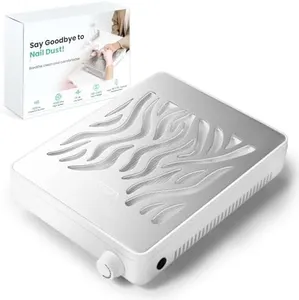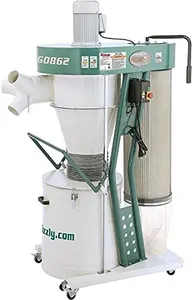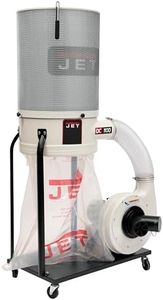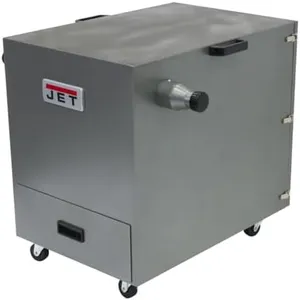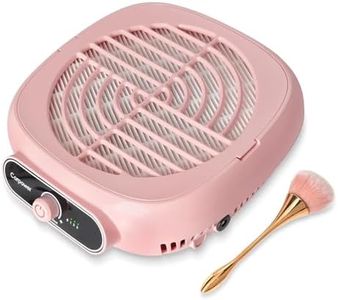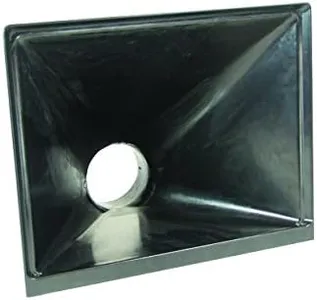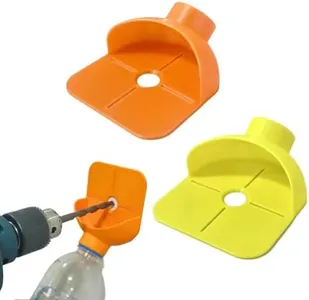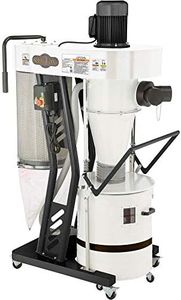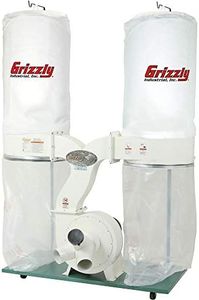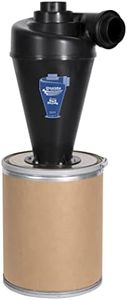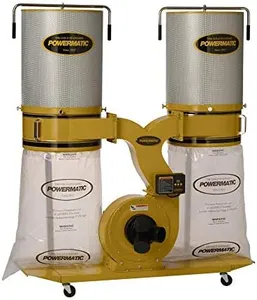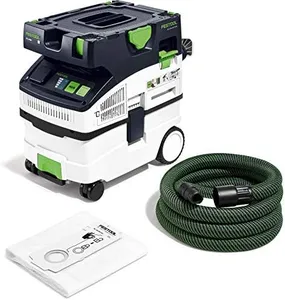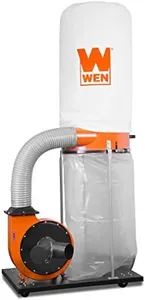10 Best Dust Collection Systems 2025 in the United States
Our technology thoroughly searches through the online shopping world, reviewing hundreds of sites. We then process and analyze this information, updating in real-time to bring you the latest top-rated products. This way, you always get the best and most current options available.

Our Top Picks
Winner
JET Cyclone Dust Collector, 2-Micron Filter, 3 HP, 230V 1Ph (Model JCDC-3)
Most important from
53 reviews
The JET Cyclone Dust Collector (Model JCDC-3) is a robust option for dust collection with several notable strengths. It boasts an impressive airflow of 1240 CFM, which is suitable for handling large volumes of dust and debris, making it ideal for medium to large workshops. The filtration efficiency is commendable, capturing 99% of 2-micron particles and 86% of 1-micron particles, ensuring cleaner air and a healthier work environment.
The cyclonic two-stage separation system enhances its effectiveness by efficiently separating heavy debris into a 66-gallon drum, which has quick release levers and independent casters for easy emptying, adding to its convenience and capacity. Additionally, the direct-mounted filter minimizes inefficiencies often caused by flexible hosing and bends, improving performance.
The remote timer settings and RF remote control are user-friendly features, allowing the system to run for specific durations and providing operational flexibility up to 50 feet away. However, the noise level of 76 dB could be a concern for users seeking quieter operation. Despite its substantial weight of 268 pounds, the dust collector's portability is somewhat mitigated by the swivel casters attached to the drum. The product comes with a comprehensive set of components, including collection bags and necessary hardware. The 5-year warranty is a positive aspect, though it reduces to 2 years for commercial or industrial use. This dust collector is a solid choice for those needing high capacity and efficient filtration in a larger workspace, though users should be prepared for its noise level and weight.
Most important from
53 reviews
Oneida Air Systems Supercell High-Pressure HEPA-GFM Dust Collector (14-Gallon)
Most important from
27 reviews
The Oneida Air Systems Supercell High-Pressure HEPA-GFM Dust Collector is a standout option in the dust-collection category, offering significantly higher suction power compared to standard models. Its ability to handle various tool sizes, from handheld sanders to CNC routers, is impressive, thanks to the robust 5HP fan blower motors. With an airflow capacity that can manage up to 100 feet of hose or ductwork, it provides exceptional coverage for large workshops.
The built-in HEPA filtration system is a major plus, capturing 99% of dust before it reaches the filter and ensuring cleaner air in your workspace. The pulse filter cleaner enhances convenience by quickly removing clogs without disassembly. This unit also features innovative additions like a wireless remote, Dust Sentry bin level sensor, and a viewing window on the dust bin, adding to its user-friendly design.
Despite these strengths, the noise level at 80 dB might be noticeable in quieter settings. Additionally, while it offers flexibility with wall-mounted or mobile options, the 14-gallon capacity may require frequent emptying for extensive use. Weighing 76 pounds, it is relatively portable but may be cumbersome for some users. Best suited for serious hobbyists or professional workshops, this dust collector combines high efficiency and convenient features, though users should be mindful of its noise and capacity limitations.
Most important from
27 reviews
Grizzly Industrial G0862-3 HP Portable Cyclone Dust Collector
Most important from
4 reviews
The Grizzly Industrial G0862-3 HP Portable Cyclone Dust Collector is a robust unit designed for efficient dust collection in workshops. With a 3 horsepower motor, it offers strong airflow capabilities, making it suitable for handling significant amounts of dust and debris. The cyclone design helps in separating heavy particles before they reach the filter, which can enhance the filtration efficiency and prolong filter life. This model is noted for being relatively portable despite its size, thanks to its compact design.
Its dimensions (31 x 54 x 82 inches) and weight might still pose challenges for smaller workshops or for users needing frequent mobility. The unit includes metal construction, which speaks to its durability and potential longevity. It has received very positive customer reviews, reflected in a perfect 5-star rating from a small number of users.
Most important from
4 reviews
Buying Guide for the Best Dust Collection Systems
Choosing the right dust collection system is crucial for maintaining a clean and safe working environment, especially in workshops, factories, or any place where dust is generated. A good dust collection system can improve air quality, protect your health, and enhance the efficiency of your work. To make an informed decision, you need to understand the key specifications and how they align with your specific needs.FAQ
Most Popular Categories Right Now
